How to grow a pine tree at home from seeds?
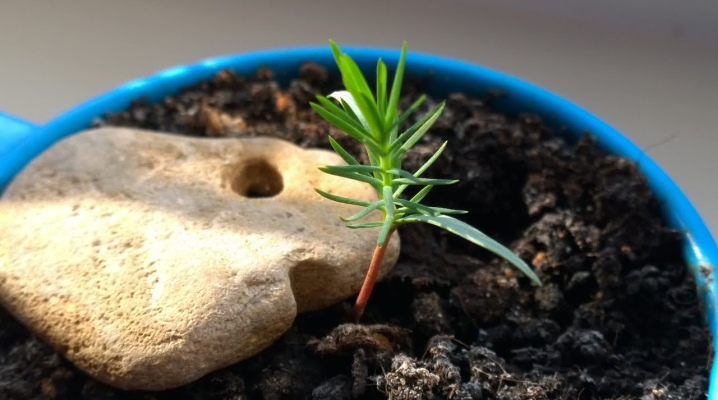
Growing pine from seed is the easiest way to get a lot of seedlings. The seed method of reproduction is often used to form a hedge or design a local area, that is, in cases where it is necessary to obtain a large number of seedlings of the same height and age. However, this technique requires significant time and patience, and any violation of the rules for growing seeds can result in the death of young plants.
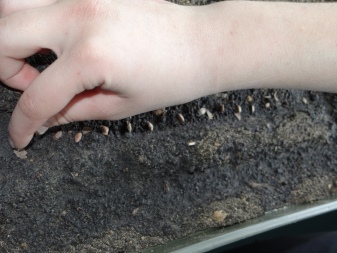
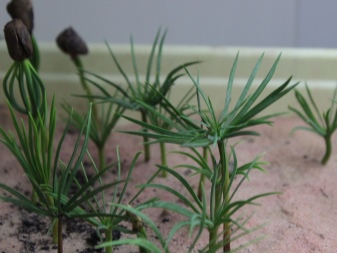
Features of seed preparation
Most conifers, including pine, are considered quite unpretentious species, but growing them from seeds does not always end with success. In order for the process of germination, transplantation and further development of a young tree to pass without complications, it is necessary to pay great attention to the selection and preparation of seeds. It should be borne in mind that only those species that grow in the natural environment of a given climatic zone and do not need additional agrotechnical measures should be grown. It is necessary to take into account the dimensions of the future tree, commensurate with the area and layout of the site.
However, when deciding on the seed method of reproduction, it must be remembered that young plants will inherit only general species characteristics, and will not retain the individual characteristics of the mother plant.

Therefore, the seed method of reproduction is not suitable to recreate the generic morphological features of a particular breed. In such cases, it is recommended to take a seedling from the nursery and grow a varietal tree from it.
After the type of pine is selected, you can start collecting and preparing seeds. The collection of seed material, taking into account the ripening time, is usually carried out in the fall, before the first snow appears. To do this, collect 2-year-old unopened cones and transfer them to a warm, dry room. If it was not possible to collect the cones, then you can purchase ready-made seeds at any specialized store. After 2-3 days, the cones will begin to crackle slowly, and after a while, grains with scales similar to wings begin to fall out of them.
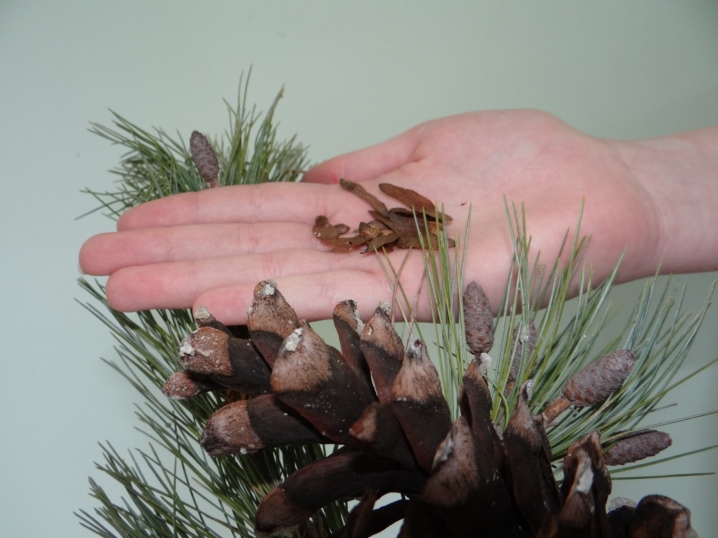
If the seeds do not spill out for a long time, then you can try to help the buds open as soon as possible. To do this, you can increase the air temperature in the room or lay a thick cloth on the heating radiators and put bumps on it. It should be remembered that the temperature should not be higher than 45 °, otherwise the seeds will dry out and become unsuitable for germination.
After all the scales of the cones have opened, the seeds are gently shaken out on a white sheet of paper and poured into a shallow container. Then they are poured with water and the emerging specimens are collected with a spoon: they are not suitable for reproduction and must be removed. Seeds that have sunk to the bottom are removed from the water, dried and stored (or prepared for planting).
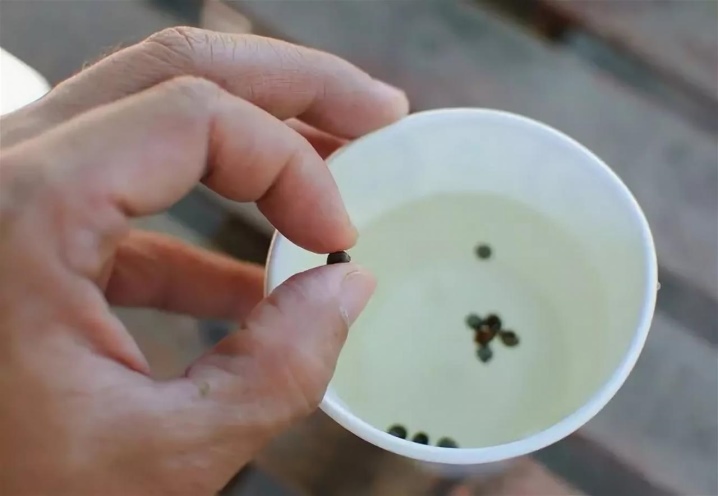
Pre-planting seed preparation assumes their hardening: stratification, which, according to many experts, has a positive effect on germination. To do this, the seed is soaked for 2-3 days in cold water, after which it is removed, mixed with clean river sand and stored all winter at a temperature of 0 to 5 °.
However, some gardeners consider the stratification procedure optional and argue that germinating the seeds just before planting is the best option.
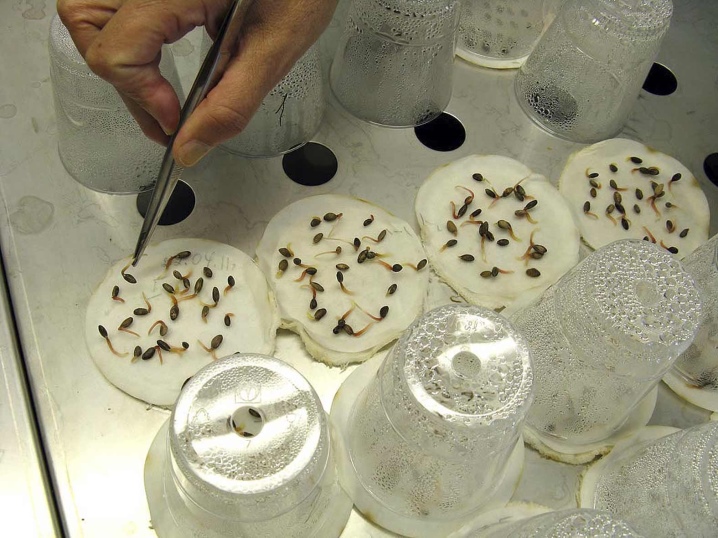
To do this, at the beginning of spring, the seed is briefly placed in a weak solution of potassium permanganate or a growth stimulator. This prevents the development of infectious diseases and improves germination. If there is neither one nor the other, then you can simply soak the seeds in warm water and leave for 3 days. Then they should be evenly spread between gauze layers, well moistened and placed in a warm place for germination. The main thing in this matter is to prevent the gauze from drying out and regularly spray it from a spray bottle. It is necessary to continue moisturizing until the seeds germinate, which usually occurs after a week.

Landing rules
Pine seeds are planted in a container with soil when germinating at home or directly into open ground. The choice of planting method depends on climatic conditions and how quickly you need to get young shoots. Whichever sowing method is chosen, a number of conditions must be strictly observed for proper seed growth. These include:
- maintaining optimal soil moisture;
- drainage formation;
- a sufficient amount of ultraviolet radiation;
- temperature from 22 to 40 °;
- balanced composition of the earth.
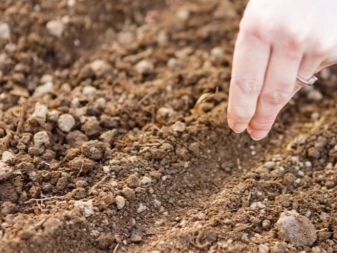

Soil for conifers is purchased at any flower shop or prepared independently. For this, peat, sand and turf are mixed and dry needles and finely chopped pine bark are added to them, which is necessary to give the soil a loose structure. Expanded clay or slate broken into small pieces is used as drainage, while the thickness of the drainage layer should be at least 2-3 cm.
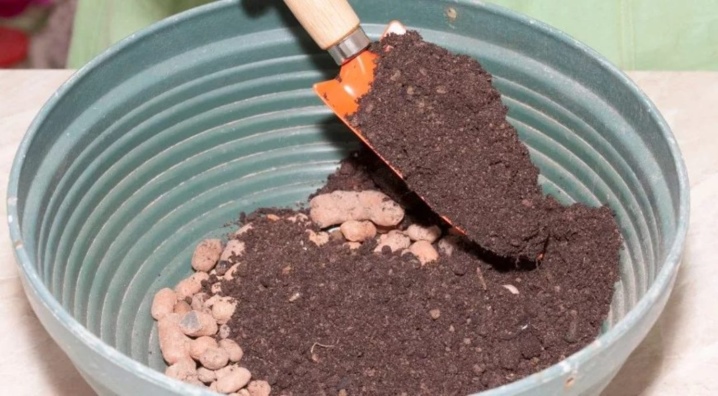
Open ground must also be prepared before planting seeds. To do this, a groove 25 cm wide and 30 cm deep is made in the ground and a previously prepared soil mixture is poured there.
Sow seeds to a depth of 2.5–3 cm, keeping an interval of 15 cm. From above, the planting is mulched or sprinkled with a thin layer of sand and wait for the emergence of seedlings. During germination, it is necessary to carefully monitor the moisture content of the soil and prevent it from drying out. To do this, the planting is moistened with a sprayer every day for 2 weeks and pets are not allowed on it. The first shoots appear 15–21 days after sowing.

The sprouts that appear are covered with a transparent film that protects the plants from attacks by birds, and they are removed only after the shoots have dropped the remnants of seeds. In such a planting, young pines can grow up to 3 years old, after which they are planted at a distance of 90-100 cm from each other. The tree can be transplanted to a permanent place no earlier than after 5 years. Both during the first and second transplantation, coniferous litter and soil taken from a pine forest must be added to the ground. Such a substrate contains mycorrhiza, which contributes to the good survival of the pine in a new place.
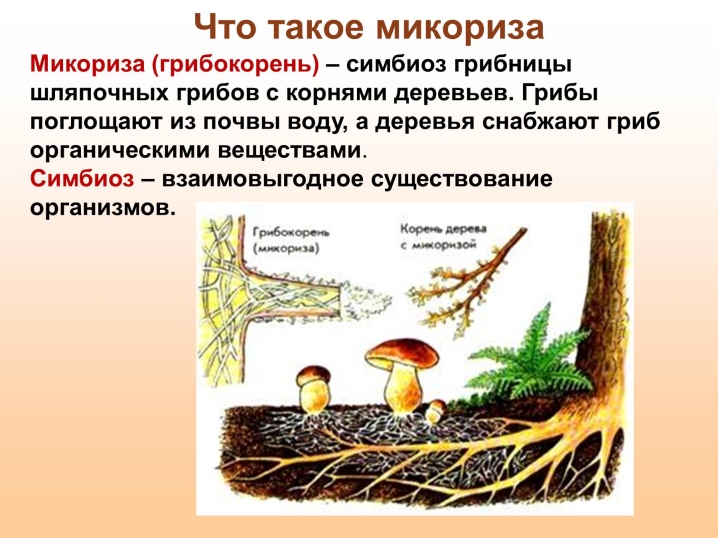
To germinate seeds in a container, containers should be chosen of medium size, at least 15 cm deep, and each seed needs its own container. This is due to the weak root system of pine sprouts, which is severely injured when diving. To avoid large losses during planting, it is better to immediately prepare an individual pot for each sprout. Before sowing, the containers are necessarily disinfected using a solution of potassium permanganate. Sand with expanded clay is calcined in an oven at a temperature of 220 ° for 20 minutes, and the fertile soil is spilled with boiling water or a weak solution of potassium permanganate.
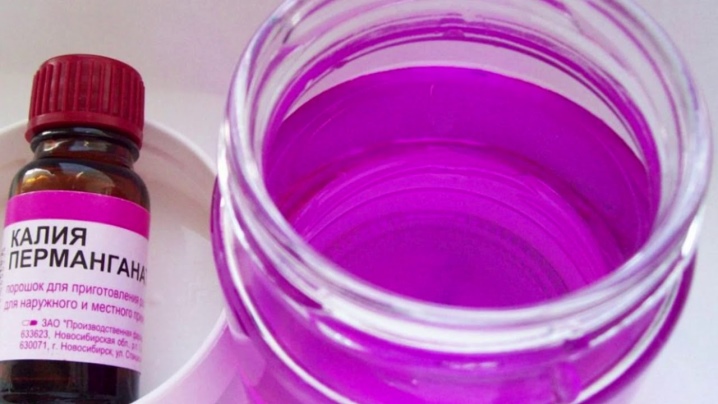
The best time to plant seeds is early March. It is during this period that seeds that have undergone a 3-month stratification are most ready for germination.
The first shoots when germinating seeds at home usually appear on the 25th day, but in some varieties they have to wait up to 2 months. Seeds that have not undergone stratification and left to germinate in wet gauze are carefully removed from the tissue and slightly buried, taking care not to damage the fragile root. Then the planting is moistened with a spray bottle and the containers are placed in a sunny place.
In the future, watering is carried out daily, preventing the substrate from drying out and using a sprayer or a pan with water for this. If the seeds were planted in too large containers, containing 500 g of soil at a rate of 250, then small holes are made in the side walls of the containers. They are necessary to normalize air exchange inside the pot and evaporate excess moisture.
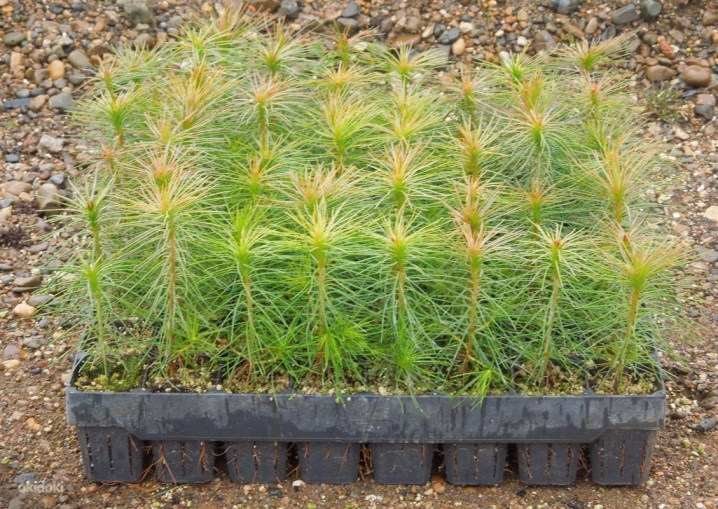
The sprouts are fed until mid-summer, using mineral compositions for this.
How and when to plant outdoors?
Young pines grown at home in pots can be transplanted outdoors at the age of 2-3 years. By this time, the root system of plants has become stronger and tolerates transplantation rather calmly, and they themselves reach a height of 25–30 cm, have a lignified trunk and several strong branches.
- Young pines should be planted in a sunny place protected from side winds at a distance of 1.5 m from each other. If this rule is neglected and trees are planted at a closer distance, then they will shade each other. At the same time, the pines growing in the middle of the planting will begin to stretch and lose their fluffiness.
- A drainage layer is poured into the dug holes, fertilizers are applied and a nutritious soil mixture is laid. The transplant should be carried out by the transshipment method, without exposing the root system and moving it to a new place along with the earthen lump. This allows you to preserve the peri-root microflora that protects the plant from pests and various kinds of diseases. Pits need to be dug so deep that the roots of the pine are in a straightened state.
- When filling up the soil, it is necessary to tamp it slightly, being careful not to damage the root system. It is recommended to tie each seedling to a support that will not allow the side wind to break or bend the young tree and will allow it to form an even, beautiful trunk.
- It is better to choose calm and not too hot weather for replanting pine trees in open ground, and arrange the trees so that they are slightly shaded from the west side.
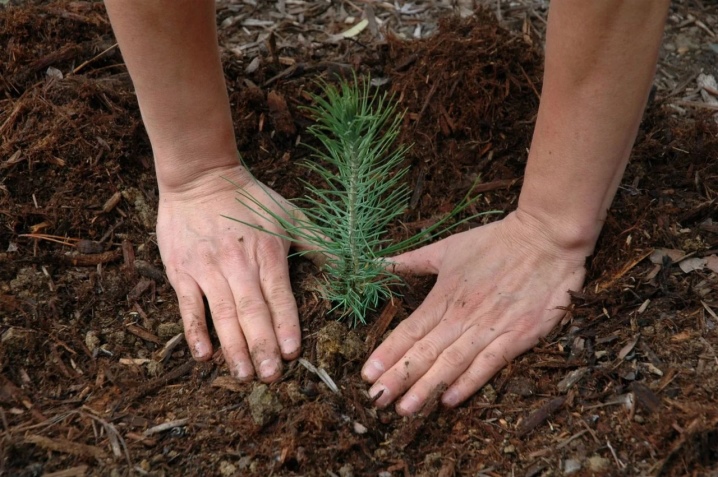
Follow-up care
Young pines the first time they need care.
- They need to be periodically freed from weeds, regularly watered and sometimes fed.
- Watering should be carried out only if the soil taken from the trunk does not form a lump and crumbles. By autumn, the moisture is slightly increased, thereby allowing the pine to stock up on a sufficient amount of moisture for the winter. In winter, irrigation is performed in very rare cases: with a prolonged absence of rain or snow in a warm climate.
- As a top dressing, it is recommended to use organic complexes on a monthly basis and 2 times a year to introduce a root growth stimulator, which contributes to the appearance of small suction roots.
- For the winter, the trunks are sprinkled with wood shavings, forming a layer of at least 2-3 cm. In the spring, the trunk is freed from sawdust, putting in their place needles and forest soil taken from a pine forest.
- To protect young pines from voracious animals, it is recommended to fence the plantings with a palisade or netting.
Care is carried out for the first 2-3 years after transplanting pines into open ground. During this time, the tree manages to grow a powerful and long root system and no longer needs human help.
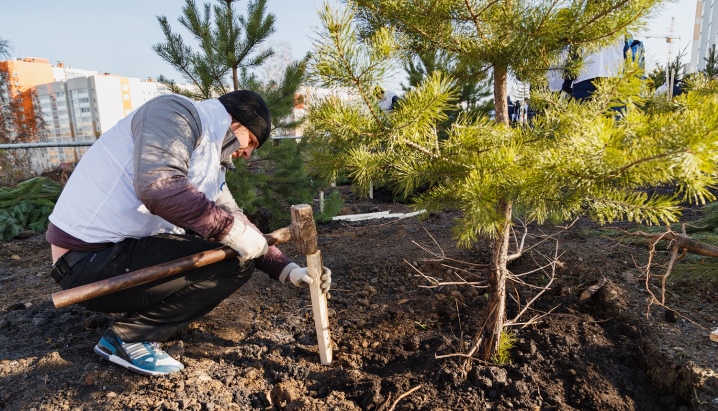
How to grow pine at home, see below.



































































The comment was sent successfully.